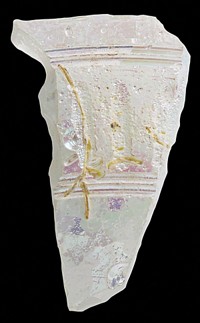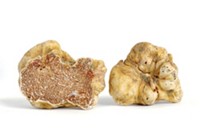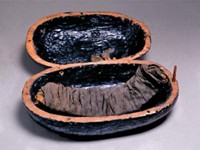Advertisement
Grab your lab coat. Let's get started
Welcome!
Welcome!
Create an account below to get 6 C&EN articles per month, receive newsletters and more - all free.
It seems this is your first time logging in online. Please enter the following information to continue.
As an ACS member you automatically get access to this site. All we need is few more details to create your reading experience.
Not you? Sign in with a different account.
Not you? Sign in with a different account.
ERROR 1
ERROR 1
ERROR 2
ERROR 2
ERROR 2
ERROR 2
ERROR 2
Password and Confirm password must match.
If you have an ACS member number, please enter it here so we can link this account to your membership. (optional)
ERROR 2
ACS values your privacy. By submitting your information, you are gaining access to C&EN and subscribing to our weekly newsletter. We use the information you provide to make your reading experience better, and we will never sell your data to third party members.
Art & Artifacts
Chemical clue suggests spurned account of Indian yellow’s origins might be right after all
Hippuric acid suggests historical pigment was made from urine of cows fed a special diet
by Bethany Halford
September 9, 2018
| A version of this story appeared in
Volume 96, Issue 36

Artists throughout the 1800s prized the pigment Indian yellow for its luminescent gold hue until synthetic pigments took its place on palettes at the beginning of the 20th century. But the pigment’s lore still fascinates. According to an account made by Indian product and resource expert Trailokya Nath Mukharji in 1883, Indian yellow was manufactured in the country’s Monghyr region by a small community who dried the urine of cows fed only mango leaves and water—a diet that produced dark yellow urine. Mukharji, the sole eyewitness to report the unusual manufacturing process, also sent samples of the raw pigment and other items involved in its preparation to the Royal Botanic Gardens, Kew. In the intervening years, scholars have cast doubt on Mukharji’s story, suggesting the pigment is purely plant based. Now, Buffalo State College’s Rebecca Ploeger and Aaron Shugar and researchers at Newfields, which includes the Indianapolis Museum of Art, have found a chemical clue that gives credence to the legend (Dyes Pigm. 2018, DOI: 10.1016/j.dyepig.2018.08.014). Using pyrolysis gas chromatography/mass spectrometry and liquid chromatography/mass spectrometry, the team identified hippuric acid—a component of cow urine—in unrefined balls of Indian yellow pigment from several sources. The finding, Ploeger says, “supports the claims that the pigment was made from urine.”





Join the conversation
Contact the reporter
Submit a Letter to the Editor for publication
Engage with us on Twitter